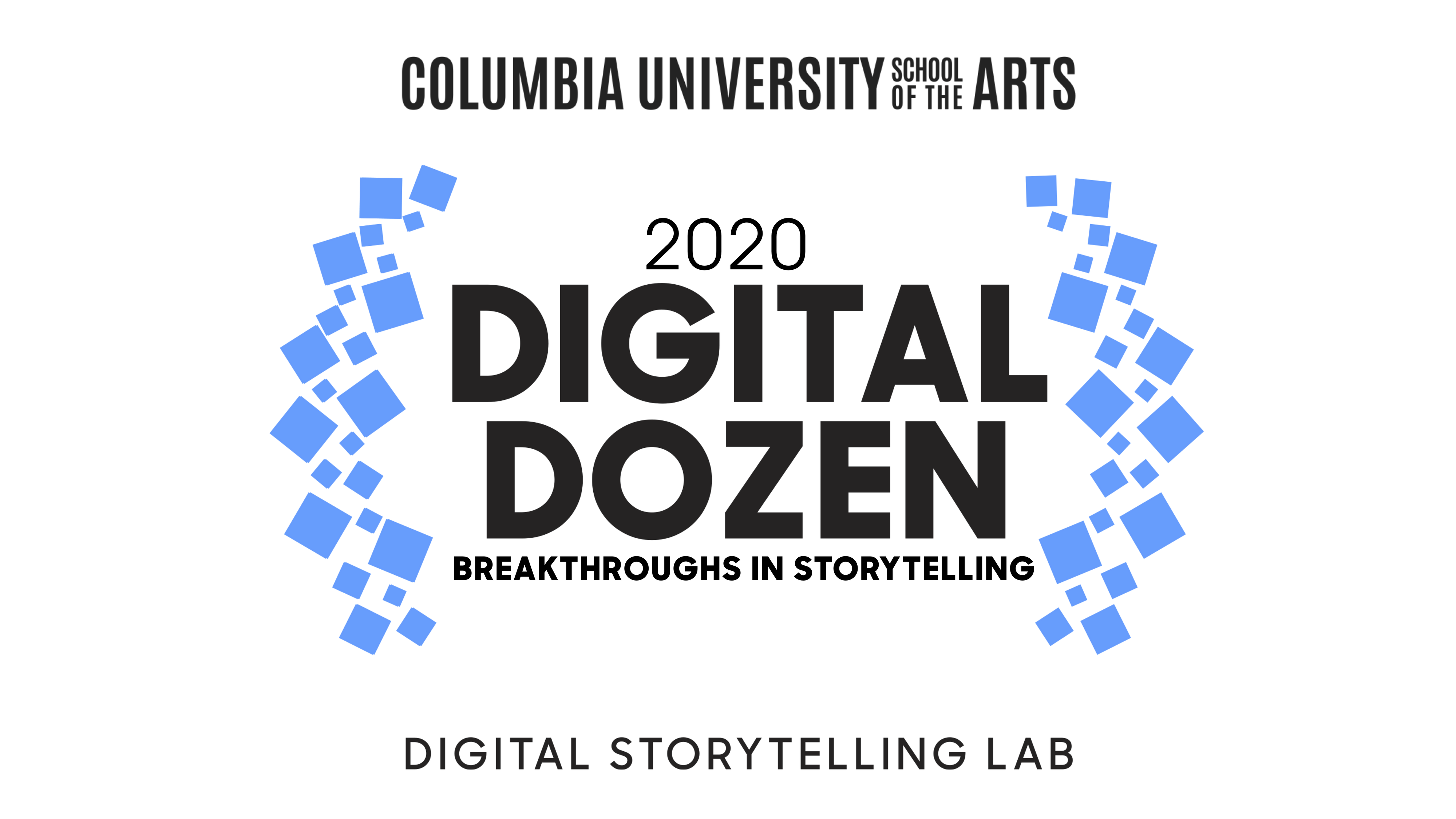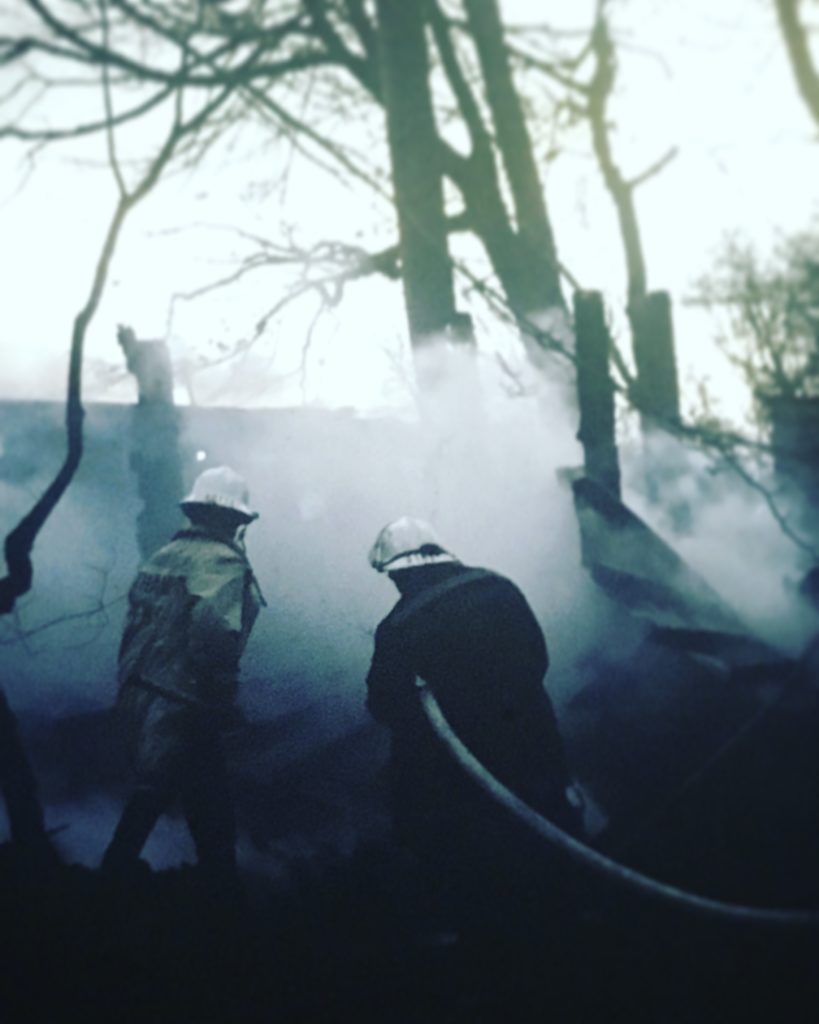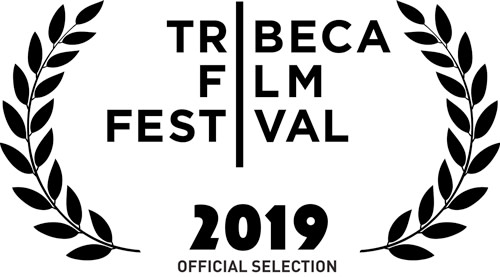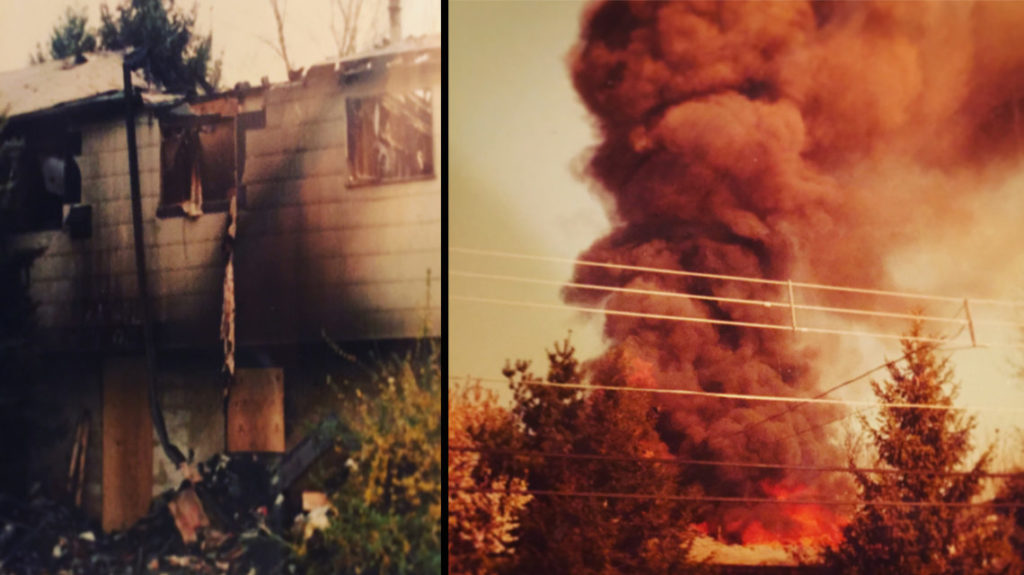Title: Where There’s Smoke
Status: Virtual Version for upwards of 100 participants (touring), Immersive Installation (currently on hold) and Feature/Series (in development)
Type of Project: Feature + Serialized Narrative + Art Book/Graphic Novel + Immersive Theatre
My Role: Co-writer, Director, Experience Designer, Producer
Project Description: In 1983 our van burst into flames on a family vacation. Eleven months later our house would burn to the ground. As I explore my past I find mysterious connections to these blazes and come face to face with a closet full of skeletons.
Where There’s Smoke mixes a live documentary, immersive theatre and elements of an escape room to create an experience that explores memory and loss. Set within the aftermath of a blaze, participants race to determine the cause of a tragic fire by sifting through the charred remains. Inspired by true events in writer/director Lance Weiler’s life, Where There’s Smoke details the connections between two mysterious fires and his father’s battle with cancer.
Official site: smokeproject.co
Stats: This project mixes analog, digital and archival elements. For instance, at the core of the immersive experience are over 1,000 fire slides that my father shot from 1968 to 1988. The slides are also being integrated into an art book/graphic novel that examines connections between the blazes that destroyed our family van and house.
Where There’s Smoke virtual version official selection of IDFA

Where There’s Smoke wins Digital Dozen: Breakthroughs in Storytelling Award

World Premiere Tribeca Film Festival 2019 – Physical Installation
Official Selection IDFA 2020 – Immersive Non-Fiction competition section
Nominated for a Future of Storytelling Innovation Award
What people are saying about the physical installation of Where There’s Smoke.
Named one of the “Best Shows & Experiences of 2019” by No Proscenium
Named one of the “top XR installations of 2019” by Forbes
What People are Saying
“Over 100 movies screened at the 2019 Tribeca Film Festival, but one of its best offerings lets you walk inside the frame and experience a story from the inside out.” – IndieWire
“Yes, there’s technology — at the piece’s heart is Internet of Things tech — but the tech is sublimated here in service to Weiler’s very personal chronicling of his father’s life and the nature of their relationship. It’s a lovely piece and another must see.” – Filmmaker Magazine
“Deeply affecting and incredibly well-crafted, this powerful documentary-meets-installation interactive experience leaves a lasting mark.…” – No Proscenium
“Absolute can’t-miss…” – Backstage
“Tribeca Immersive 2019 Awesome List” – Forbes

World Premiere

Work-in-progress installation


‘Where There’s Smoke’: Storytelling Pioneer Lance Weiler’s Most Poignant Work Yet
By Eric Kohn The cutting-edge filmmaker’s latest work is a unique immersive experience with deep personal resonance.
Over 100 movies screened at the 2019 Tribeca Film Festival, but one of its best offerings lets you walk inside the frame and experience a story from the inside out. In “Where There’s Smoke,” a selection of Tribeca’s Virtual Arcade program, participants literally walk through one man’s memories and engage with his grief. Lance Weiler, a filmmaker who years ago dove headlong into the creative possibility of immersive storytelling, has crafted an elaborate form of experiential cinema and interactive theater out of personal experiences.
The genesis of the project — which finds participants walking through several rooms and learning about his youth — stems from Weiler’s complex relationship with his father, who passed away last year. The Philadelphia native was a volunteer firefighter and amateur fire scene photographer who took his family on long road trips around the country, but often struggled to connect with his son. When he became sick with cancer, Weiler launched a series of interviews with his father that form the narrative backbone of the project, along with ephemera that include countless Polaroid photographs and objects from Weiler’s childhood home.
But Weiler’s history with his father also pivots on a mystery: The Weilers survived two dangerous fires, one in the family van while on vacation, and again when flames burst out in the basement. Was Weiler’s father a secret pyromaniac who put his family in peril to satisfy his obsessions? The evidence stacks up, but ultimately becomes a red herring. That’s partly because the project is anything but non-linear, and also because Weiler himself has come to terms with his uncertainties over that question.
And for some people, it doesn’t come up at all. Unfolding across three rooms, “Where There’s Smoke” begins by inviting participants to engage in a therapeutic mental game, then takes them to a room where their choices lead to six filmed sequences out of nine possibilities. In some of them, Weiler shares audio from interviews with his dad; in others, he recalls experiences from his childhood, and at the older man’s death bed. That means that every group experiences “Where There’s Smoke” — which is designed for four people at a time, and runs about 45 minutes — in a unique way, starting with their own conduit to Weiler’s story.
As the experience begins, participants enter a blank white room with two small tables, each of which contains blank pieces of paper and pens. A facilitator tells participants to sit across from someone they don’t know and close their eyes. In a tape recording, Weiler introduces himself and asks all four participants to imagine a scenario in which they wake up at home and realize the room is on fire. With only moments to process the situation before escaping, you can only take one object with you; the only rule, Weiler cautions, is that “it can’t be digital.” When participants open their eyes, they’re asked to draw the object they chose to take. (For me, it was the fuzzy stuffed turtle I’ve kept around since I was an infant. Go ahead, get your cooing out of the way now.) Then, everyone is tasked with asking the person seated opposite them the same question five times — “Why are you emotionally attached to this object?” — and scribbling notes from the answers around the drawing.
With that jarringly intimate exercise out of the way, “Where There’s Smoke” morphs into a more familiar kind of interactive experience: The escape room. But while most escape rooms revolve around cheap gimmicks — escape the temple, stop the bomb, solve a zillion riddles before the buzzer goes off — the stakes of “Where There’s Smoke” are subtler, and creep into the scenario with time.
First, all four participants open up a suitcase containing details about Weiler’s father: photographs, a driver’s license, a vacation log, even his birth and death certificates. There were also two small flashlights and a map. We were given 45 seconds to learn as much as possible from these fragments before being sent into a dark corridor that reeked of smoke, around a corner and into the next room, which contained a charred recliner and a table with an old projector on it. The map had four objects on it that we had to find. Once we found each object — a rotary phone, a ham radio, a burnt cassette tape, and a still camera — we placed them in small glass rectangles on the table with the projector. The glass panes were glowing blue, but when we moved the objects around, they would change to green, and the filmed segments would play.
From there, the “escape room” concept solidified into an interactive viewing process, and after our sixth film, we were asked to rescue one object from the table. We chose the cassette tape, triggering a voiceover from Weiler about his dad’s classical music tapes and how they connected to his youth. Another door opened. The final room was bathed in soothing blue light, and the walls were covered with the objects drawn by previous participants in the first room exercise. Our own drawings had been laid out on a table alongside thumb tacks so we could pin them up. It was a poignant way to bring the journey full circle — exiting Weiler’s experiences through the same intimate filter he established at the beginning.
I have tracked Weiler’s work for years, and while he has always been a cutting-edge storyteller (I believe the term he preferred at one point is “story architect”), “Where There’s Smoke” stands out as the crowning achievement of a career in narrative experimentations. These days, he runs the Digital Storytelling Lab at Columbia University, but his work has been ahead of the curve for two decades. His 1998 found-footage horror movie “The Last Broadcast” toyed with truth and fiction a year before “The Blair Witch Project” got all the credit. With his 2006 concussion thriller “Head Trauma,” he conceived of an innovative ARG (artificial reality game) to expand the narrative of the story that has become de rigueur for studio marketing departments. At a certain point, he was a perennial figure in the “transmedia” crowd, when the term gained prominence through media scholar Henry Jenkins. And while “transmedia” may be a dated term today, the fragmentation of media that defines our current communication landscape means that we are constantly experiencing aspects of film and television through multiple avenues.
Weiler has leaned into that: In Sundance’s New Frontiers section, his “Pandemic” involved an interactive component to experiencing a story about an international medical crisis, and last year’s “Frankenstein AI” adapted the Mary Shelley classic into an interactive experience in which participants’ own emotions play a role in the development of a robotic monster.
Weiler is a bit of a Victor Frankenstein himself, a mad scientist tinkering with the boundless possibilities of technology and rewiring them for his own inventive means. At a precarious moment for everyone in the film and television business, where questions surround the future of entertainment (and narrative itself), Weiler’s work has become more relevant than ever. Talk of “the experience economy” has become ubiquitous — the idea that people will only leave their house to spend money for a genuinely special experience — and while that logic has been the driving force behind Disney theme parks for generations, it’s currently epitomized by everything from the Meow Wolf collective to Tokyo’s teamLab. But Weiler is one of the most exciting individuals to explore this medium as an organic extension of his storytelling roots. He’s a filmmaker from the future even when it catches up to him.
“Where There’s Smoke” is the latest example of his ability to go beyond the static boundaries of most so-called “next level” media like virtual reality. He has described the project as “an emphatic healing/learning experience,” but it’s essentially a first-person documentary under the guise of an escape room, pushing the technology and the documentary tradition in a fresh direction.
After my experience ended, Weiler emerged like an artsy Wizard of Oz to reveal the inner workings of his kingdom, which includes weighted magnets underneath the desk that sent signals to a computer program, triggering the various film clips we’d watched during the show. Written in the Python script, the code meant that “Where There’s Smoke” could be restaged in any number of contexts, and refashioned for other uses. He has been in touch with the narrative medicine program at Columbia about utilizing the experience to help patients and relatives cope with terminal illness, and plans a narrative feature about his childhood that will draw on elements of the show.
To some degree, the most complete experience of “Where There’s Smoke” mandates the presence of Weiler himself to explain its function. He said he wanted to demystify the grieving process, and what it has meant to him in recent months. “Grief is non-linear,” he said. “You think there’s an answer, and it’s actually a lot of questions, and you have to let go.” By the end of “Where There’s Smoke,” you don’t just understand where he’s coming from; you feel it.


Originally published by Filmmaker Magazine
Lance Weiler on his Emergent Creative Process
by Paula Bernstein
In 1983, Lance Weiler’s van burst into flames during a family vacation. Eleven months later his house burnt to the ground. His latest project, “Where There’s Smoke,” mixes theater, film, gaming, and emergent technology story in an attempt to uncover the truth about those two incidents.
On Sunday, September 18 as part of the IFP Film Week’s Screen Forward Conference, Weiler will discuss the creative process behind the immersive storytelling project and present hands-on opportunities for participants to experiment.
Weiler has been the creative force behind some of the most innovative projects in the new immersive storytelling space. An alumni of the Sundance Screenwriters Lab, Weiler is also the director of the Columbia University Digital Storytelling Lab. His recent collaboration with David Cronenberg, TIFF and the CFC Media Lab entitled Body/Mind/Change, is traveling the world for the next four years.
In advance of IFP Film Week, Filmmaker reached out to Weiler to get a preview of “Where There’s Smoke” and what he’s got planned for Sunday’s session.
Filmmaker: Can you talk a little bit about the inception of “Where There’s Smoke”?
Weiler: This project is something that I’ve been working on for quite some time and trying to find the right vehicle to tell it. I grew up in a firefighting household, in a firefighting culture. My dad was a volunteer firefighter for about 26 years and an amateur photographer. He taught me photography and he also would take pictures of things in all different stages of burning. We had scanners in the house. He would hear radio calls and go out and shoot slides of blazes. He also helped and did some after-the-fact documentation of fires.
“Where There’s Smoke” is about memory. It’s a very complex story, which, in some ways, is a strange sort of homage to my father. My dad introduced me to pulp and noir and has been in a couple of my films and we’ve collaborated at different times, so this story is really looking at our relationship. It goes back to two real moments in my life: my van burst into flames while we were on vacation in 1983 and then 11 months later, my house burnt to the ground. It looks at these two inidents to see if there’s any potential connection between them and in doing so, starts to dig up all this really wild stuff that I never knew about my family, that I never knew about my father. Out of it comes this very interesting balance and challenge in terms of how I tell that story.
Filmmaker: So how did you determine the best way to tell the story? Or is that still emerging?
Weiler: It’s a rich world that I’m looking at. And I’m almost storytelling-agnostic. I don’t have one particular form that I work in. I’ll do immersive-based things. I’ll do participatory things like Sherlock Holmes & the Internet of Things where there is no story and we shape the story together, to this notion of “How do I convey and share what the story is at the same time that I’m finding what the story is?” For me, it’s an emergent creative process. I think what’s fascinating about it is it’s allowing me to challenge the notion of how I think about story. It’s like what Godard said: “A story should have a beginning, a middle and an end, but not necessarily in that order.”
I’m fascinated by the idea of building worlds and thinking “What does a potential world look like?” In the case of this project, I’ve been working on an immersive theater piece around it. I’ve been working on a graphic novel that comes out of it and I have a feature-based script that I’ve worked on too. It started as a feature script, and then I realized there was a lot more there in terms of serialization. It mixes fact and fiction in some interesting ways and the fact of it is really wild to begin with, but then I build on it with some of the fiction.
Filmmaker: What will participants experience on Sunday?
Weiler: On Sunday, I will be pulling from a repository of a whole bunch of images that my father has shot. I’ll be weaving in these fragmented narratives and telling pieces of different parts of the story and then I’ll have a participatory layer where people will be able to engage and be part of that process. The immersive theater piece — at least how it works currently — is that you come into a place that’s totally destroyed. You can tell there’s been some sort of a blaze and there’s a series of objects that are in the space in various states of decay. There might be a teddy bear that’s soaking wet and singed, so you can tell it’s some kind of a stuffed animal, but not what kind. There might be a record that’s melted so you can’t really see what the name of the band is. There will be an assortment of these various objects that will either be water-logged, charred, melted, or in various states of decay. When you interact with them, it’s almost like you’re going through the rubble, sort of like when I went through my house after it burned down and you’re trying to see what’s left. You’re trying to see what parts of your life still exist and this element in the immersive theater piece, as you find these pieces, they’ll start to glow in subtle ways.
There’s this idea that every time these things are found or come near each other, the room has projection mapping and the whole narrative changes, the space changes, the stories are kind of released by a discovery by the actual audience, as though you’re moving through a space and uncovering and exploring that space. It’s kind of like going back through your own memories and the recesses of your own mind and unlocking things. Memory shifts with time. There’s a narrative that comes out of it. This project is really trying to figure out the balance of how I can dig through an autobiographical thing that comes from my real life and find a way to create emotional resonant pieces of it that then will come into a larger whole.
Sunday is really an exploratory session. I’ll share how I’m approaching these types of things and how I’m thinking about using technology as a way to shape humanity, as opposed to technology shaping us. It’s kind of a talk meets a participatory session, but in a certain sense, it’s me testing mechanics and different ideas and sharing. It’s mixed performance and participation and process. It’s this opportunity to explore. I think the IFP Film Week is a great place to do that.
I will go into four core principles that I’ve found that I’m using in my work and I’ll talk about my emerging creative process. I’m really open to embracing ambiguity in the creative process. How can you push through it? It feels like a lot of it needs to drive from an emotional place, an emotional connection. To make something that is emotionally resonant is my overarching goal.



